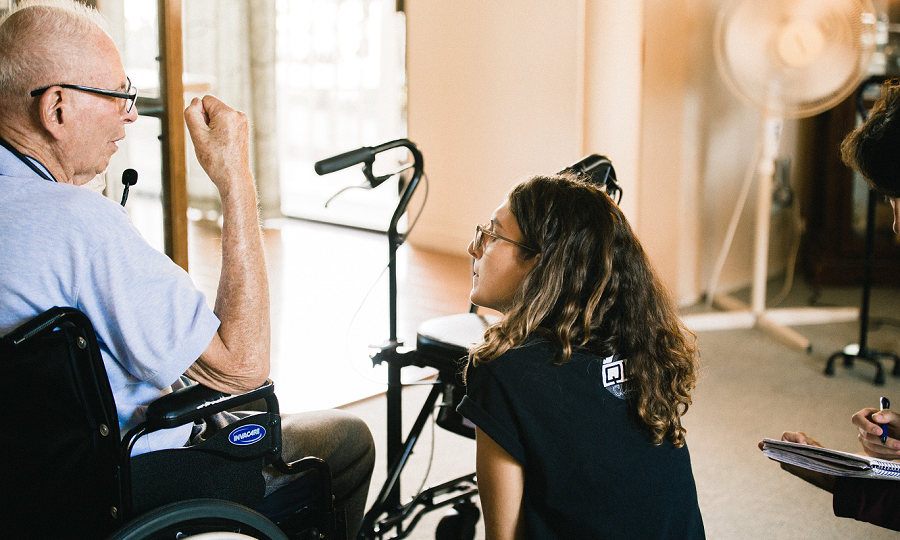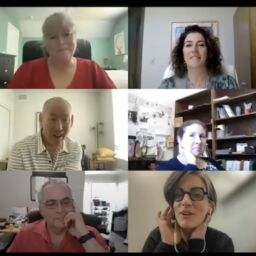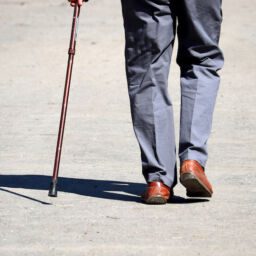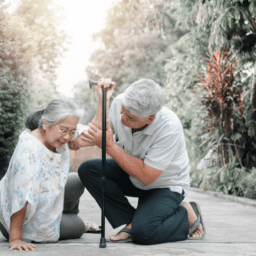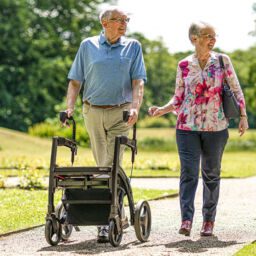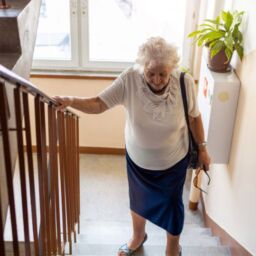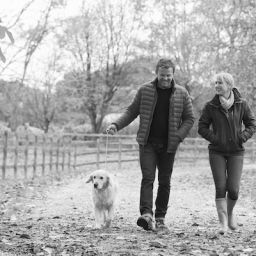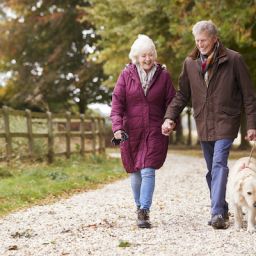Written by Jessica Chellsen, PT, DPT, CSCS; Photo: Sidney Collin and Jack, a veteran Sidney worked with to create her first prototype of NexStride.
It’s always necessary for people living with Parkinson’s to lead an active lifestyle. It has become even more important to exercise in the last six months while staying safe during the pandemic. So, how do you continue to exercise, whether outside, on your own in your house, or at a park, if freezing of gait (FOG) is an issue for you?
Freezing of gait is one of the most debilitating symptoms of Parkinson’s because it keeps people from getting outside and moving around. If you’ve ever felt like your feet are “glued to the floor” or “stuck in cement,” you’ve experienced freezing of gait. This symptom occurs because of a disconnect between the brain and the body. This interruption stops the neural signal from reaching the motor neurons that should activate muscles to move, preventing people with Parkinson’s from starting or continuing to walk. It’s most often experienced when turning, initiating movement, or when faced with distractions. FOG negatively impacts quality of life, daily function, and is the leading cause of falls for people living with Parkinson’s.
Visual and audio feedback is a helpful tactic for those with Parkinson’s and is extremely effective in reducing FOG episodes.
Your basal ganglia are what tell your body to switch from one movement to the next automatic movement. When the basal ganglia aren’t functioning correctly, as can be the case in people with Parkinson’s, an external cue such as a laser to step over can bypass the basal ganglia and make walking more fluid. Visual cues have been shown to improve gait significantly. Specifically, visual cues can help with sizing step length, as people with Parkinson’s may shorten their step lengths over time.
Auditory cues have been shown to decrease the number of FOG episodes during step initiation, turning, and obstacles. They’ve also been shown to increase gait velocity, step length, steps per minute, and improve gait variability.
There are two strategies to using cues. The first is a prevention strategy focused on improving gait mechanics. Freezing often occurs when gait mechanics deteriorate. The second is a rescue strategy designed to assist someone who is currently experiencing FOG. This rescue strategy creates a specific focus that allows someone to shift their attention from an outside trigger to their walking. Research has shown that technology that provides external cues, such as a line on the floor or a rhythmic sound, can be very effective.
There are several non-invasive ways to incorporate visual and auditory cues into your daily life:
NexStride
NexStride is a daily assistive device that attaches to your favorite cane, walker, or walking poles. It provides on-demand visual and auditory cues in the form of a green laser line and metronome. These cues can be customized to your personal preference.
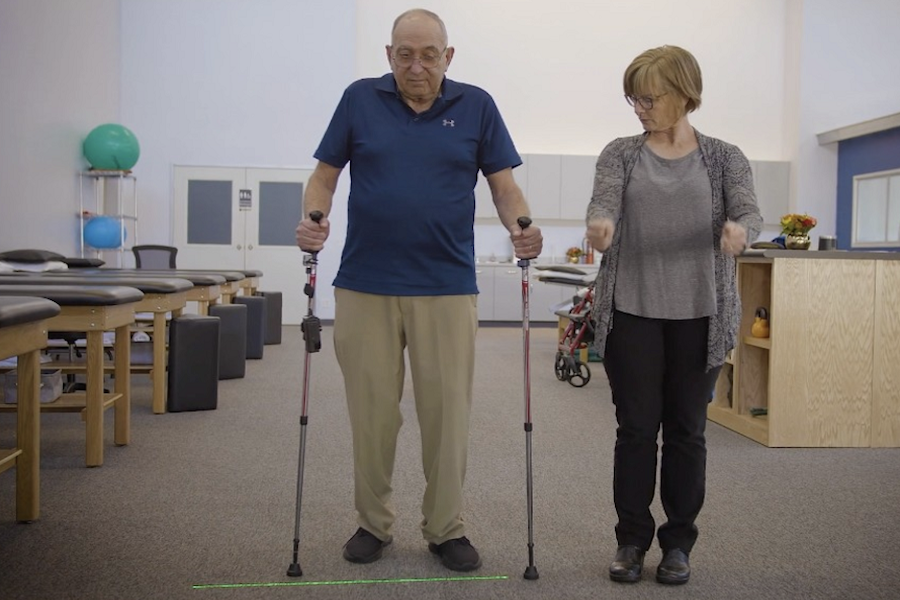
U-Step Walker
The U-Step Walker incorporates a reverse braking system that keeps the wheels of your walker in place unless holding down a lever to move. The walker can also be ordered with a cueing module with visual and sound accessories.
Tape and visualization
If you have specific problem spots within your home that cause you to freeze, you can put tape on the ground and step over the pieces. Outside of your home, you can visualize stepping over or onto something when you experience freezing.
Self-cueing*
You can keep a laser point easily within reach when walking so that when you experience freezing, you can self-cue by shining the laser in front of you and stepping on the light.
You can keep a metronome in your pocket or put a metronome app on your phone and walk to the beats that it provides, or you can play music and walk to the beat.
*Note: Self-cueing options are a great way to overcome FOG. However, it’s important to mention that it can be challenging to remember to activate those aids when you freeze. If this happens to you, it may be time to look for an external cueing solution. Always consider what will work the best for you and your preferred mobility aid.
If you have any questions about cueing, contact your physical therapist or another healthcare professional for more information.
Want More Practical Articles Like This?
Much more can be found in our Every Victory Counts® manual. It’s packed with information about everything Parkinson’s, plus an expanded worksheets and resources section to help you put what you’ve learned into action. Request your free copy of the Every Victory Counts manual by clicking the button below.
Thank you to our 2020 Peak Partners, Amneal and Kyowa Kirin, with special support from Adamas, for helping us make printing, distributing, and shipping the Every Victory Counts manual for free possible.


